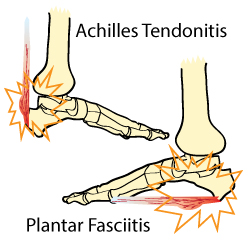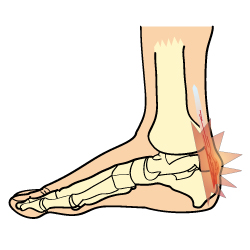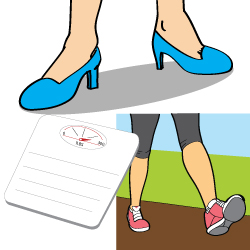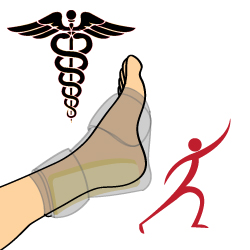Plantar Fasciitis Vs

Anatomy
The Achilles Tendon is the largest tendon in the body. It connects the muscles in your calf to your heel bone. You use your Achilles Tendon during activities like running and jumping.
The Plantar Fascia runs along the bottom of your foot, connecting your heel bone to your metatarsals. The Plantar Fascia helps to form the arch of your foot.
Since the Achilles Tendon and the Plantar Fascia both connect to the heel bone (though at different areas), they are both often associated with heel pain.

The Condition
Achilles Tendonitis occurs when the Achilles Tendon becomes painful and inflamed, usually due to overuse or degeneration.
Plantar Fasciitis occurs when the plantar fascia becomes irritated and swollen due to overuse or an injury.

Symptoms
With Achilles Tendonitis, the pain is felt along the back of the leg and ankle, down to the heel. Other signs and symptoms include pain that worsens with physical activity, stiffness, tenderness and swelling. Pain will also be worse in the morning. Sometimes there may also be a bone spur.
With Plantar Fasciitis, the pain is usually concentrated around the bottom of the heel, usually near the front. The pain can often be worse first thing in the morning while taking the first few steps, or after long periods of standing or walking.

The Cause
Achilles Tendonitis is common among runners and other athletes. An increase in mileage is a common cause of the condition. General overuse of the Achilles Tendon and degeneration of the tendon over time are other causes.
Plantar Fasciitis is most commonly caused by overuse of the plantar fascia. This can be related to working on your feet all day, or from a specific sporting activity. This may be further aggravated by improper footwear, obesity, etc.

Treatment
Treatments for Achilles Tendonitis and Plantar Fasciitis are very similar. These include:
- Rest: Resting your ankle and making sure you don't re-injure your Achilles are important if you want to heal quickly. You should avoid any strenuous physical activity until you are feeling better. Elevating your ankle will also work to relieve inflammation.
- Cold Compression: Using a cold compression wrap that's designed for the ankle can help to relieve both pain and swelling. This is the first step towards healing. Using something that is specially designed for the area you're treating will work much better than ice packs or a bag of peas.
- Physical Therapy: A physical therapy program that includes stretching and strengthening exercises can help improve your mobility as you heal. Just make sure you don't start physical therapy too soon in the healing process, or you'll re-injure your Achilles.
Full list of treatment methods can be found on our treatment page
